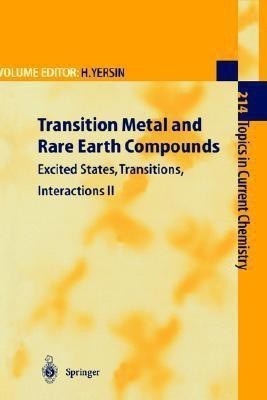Transition Metal and Rare Earth Compounds(English, Hardcover, unknown)
Quick Overview
Product Price Comparison
There exists a large literature on the spectroscopic properties of copper(II) com- 9 pounds. This is due to the simplicity of the d electron configuration, the wide variety of stereochemistries that copper(II) compounds can adopt, and the f- xional geometric behavior that they sometimes exhibit [1]. The electronic and geometric properties of a molecule are inexorably linked and this is especially true with six-coordinate copper(II) compounds which are subject to a Jahn-T- ler effect.However,the spectral-structural correlations that are sometimes d- wn must often be viewed with caution as the information contained in a typical solution UV-Vis absorption spectrum of a copper(II) compound is limited. Meaningful spectral-structural correlations can be obtained in a related series of compounds where detailed spectroscopic data is available. In the fol- 4- lowing sections two such series are examined; the six-coordinate CuF and 6 2+ Cu(H O) ions doped as impurities in single crystal hosts.Using low tempera- 2 6 ture polarized optical spectroscopy and electron paramagnetic resonance, a very detailed picture can be drawn about the geometry of these ions in both their ground and excited electronic states. We then compare the spectrosco- cally determined structural data with that obtained from X-ray diffraction or EXAFS measurements.


